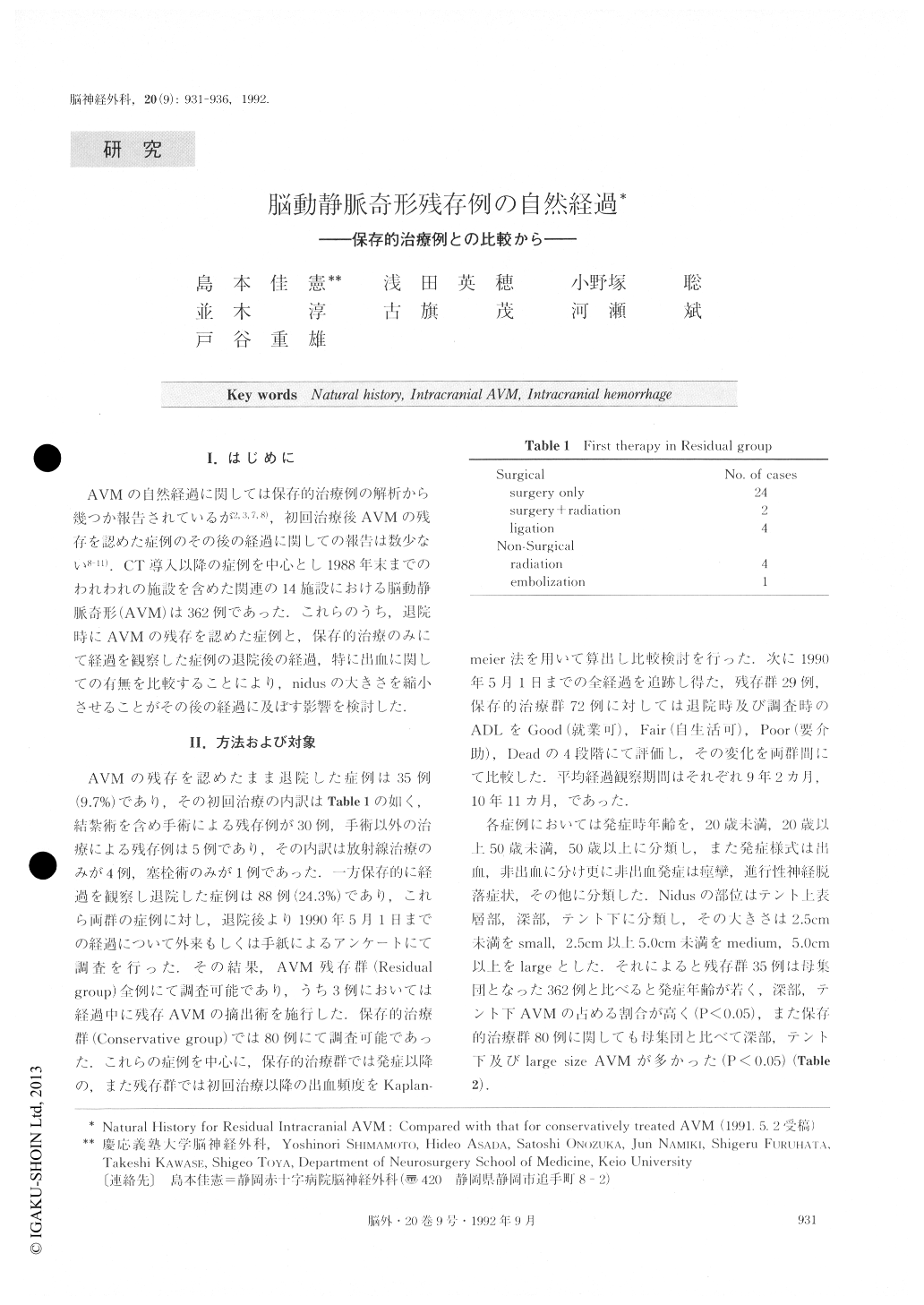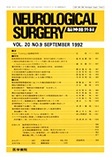Japanese
English
- 有料閲覧
- Abstract 文献概要
- 1ページ目 Look Inside
I.はじめに
AVMの自然経過に関しては保存的治療例の解析から幾つか報告されているが2,3,7,8),初回治療後AVMの残存を認めた症例のその後の経過に関しての報告は数少ない8-11).CT導人以降の症例を中心とし1988年末までのわれわれの施設を含めた関連の14施設における脳動静脈奇形(AVM)は362例であった.これらのうら,退院時にAVMの残存を認めた症例と,保存的治療のみにて経過を観察した症例の退院後の経過,特に出血に関しての有無を比較することにより,nidussの大きさを縮小させることがその後の経過に及ぼす影響を検討した.
It is generally accepted that the most suitable treat-ment of AVM is surgical removal which does not cause neurological deficits. But in some cases, it is impossible to treat surgically because of size or location, so the pa-tient is unfortunately discharged with some part of the nidus remaining. In this paper, we report the natural history of residual AVMs in which part of the nidus re-mained after initial therapy, and try to ascertain whether therapeutic reduction of the nidus is more effective in preventing intracranial hemorrhage than conservative treatment.
Of 362 cases, residual AVMs were found in 35 cases, and were followed up for 9.2 years on average. Eighty cases treated with only conservative therapy were also followed up for 10.9 years on average. The annual risk-of intracranial hemorrhage for residual AVMs was 2.9% and that for conservatively treated AVMs was 3.0%, not a significant difference.
There was no difference between the two groups inmortality or ADL. We conclude that therapeutic reduc-tion of the nidus was not effective in preventing intra-cranial hemorrhage.

Copyright © 1992, Igaku-Shoin Ltd. All rights reserved.


